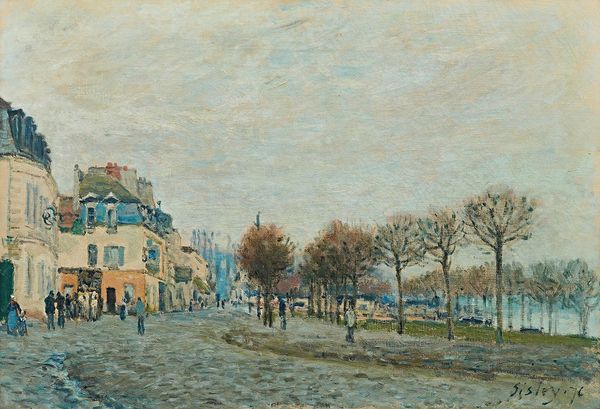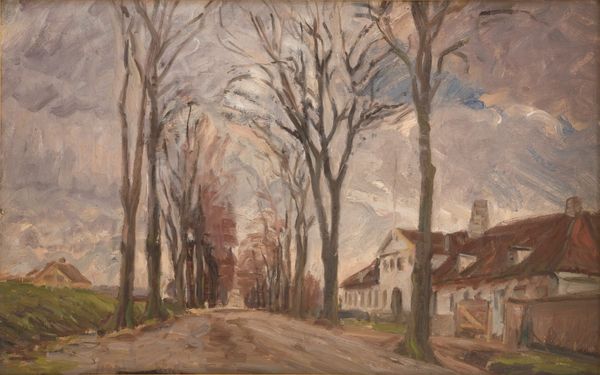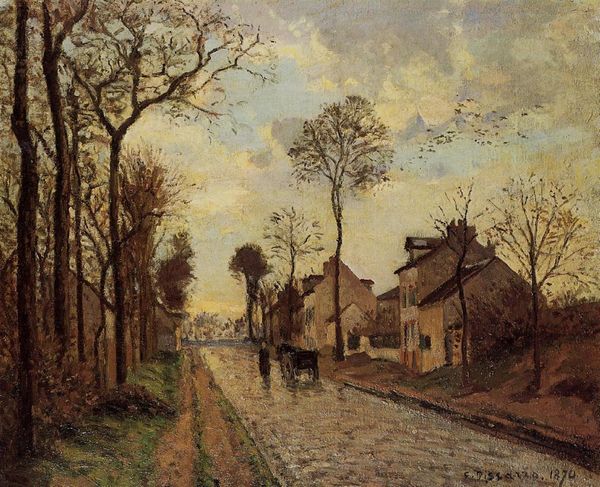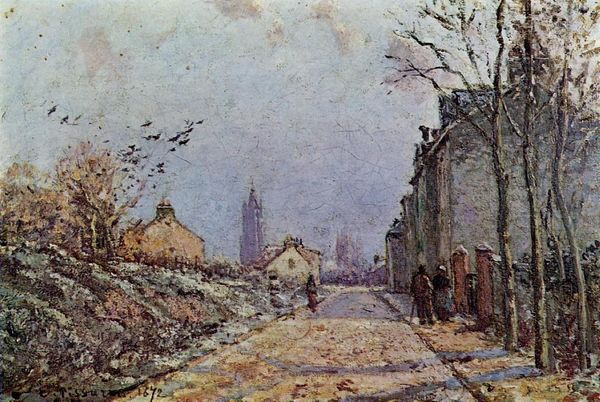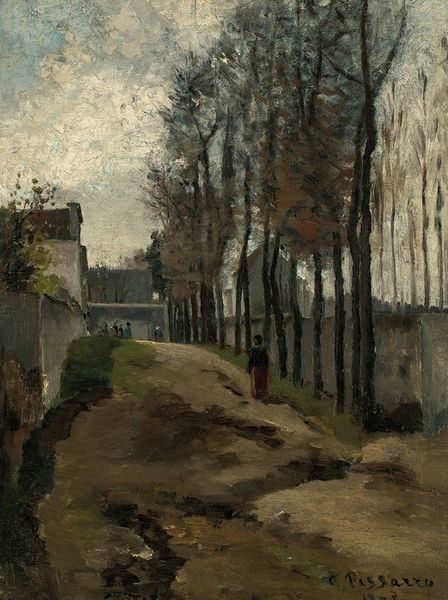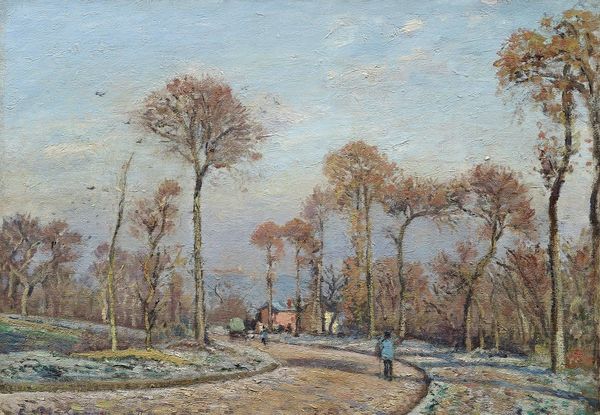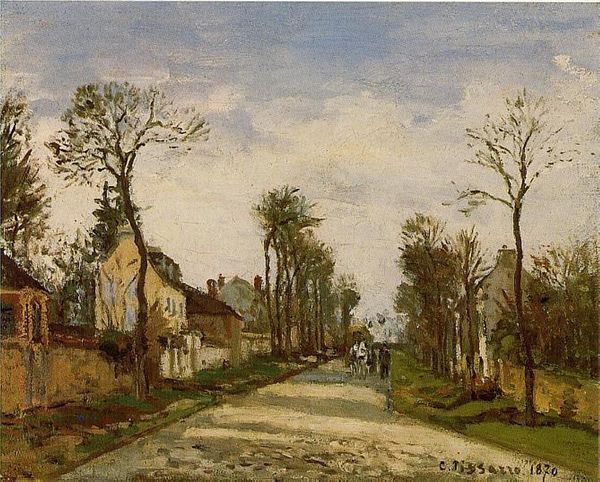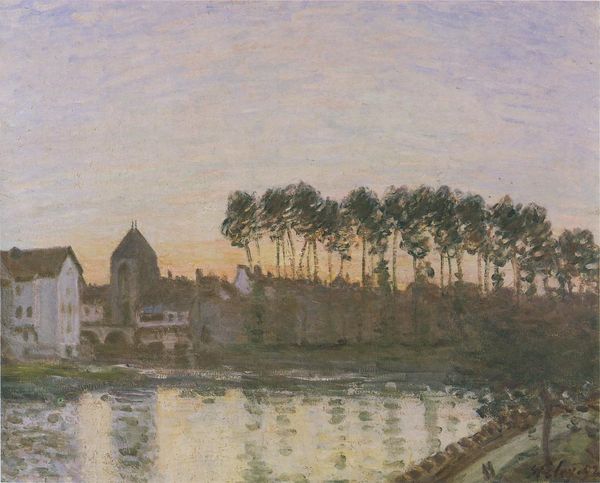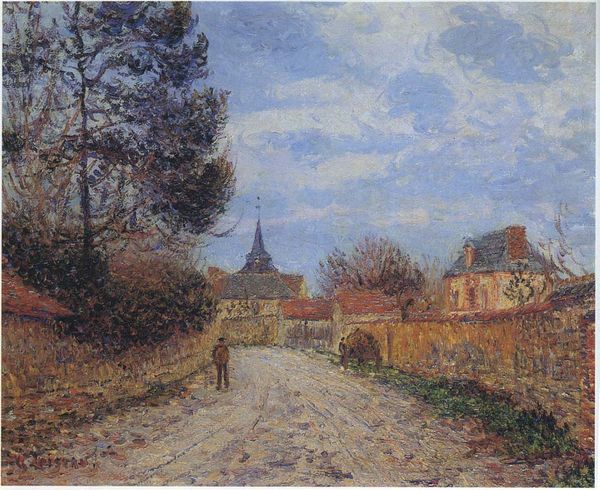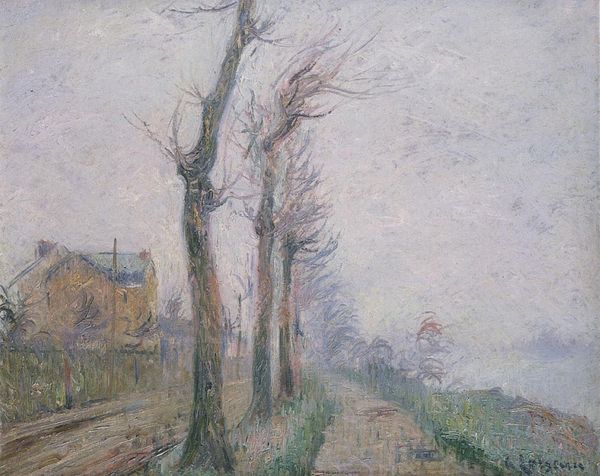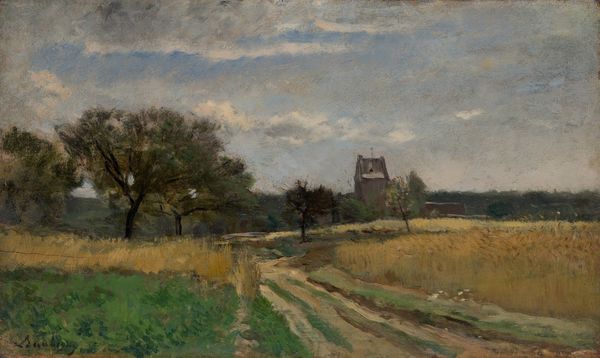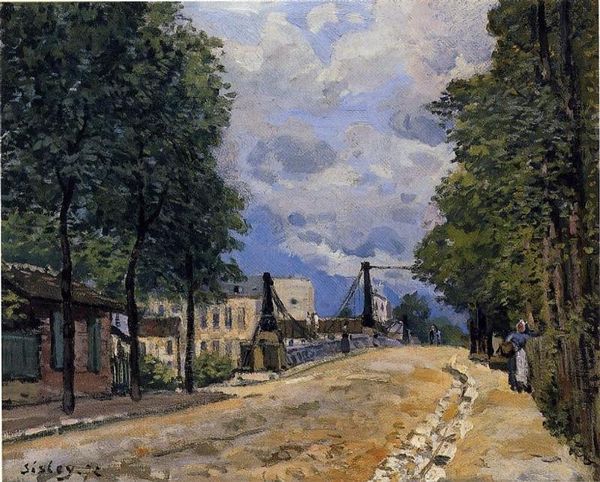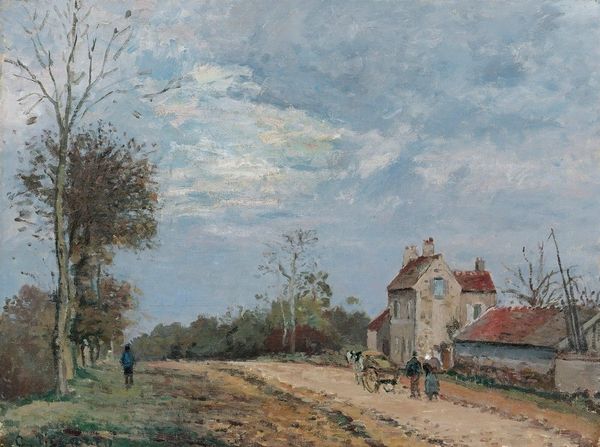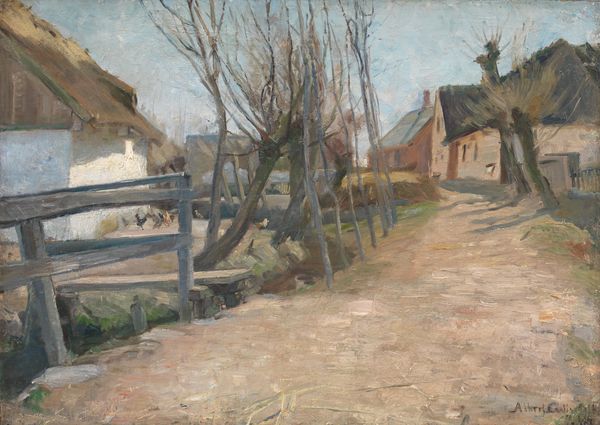
painting, plein-air, oil-paint
#
tree
#
painting
#
impressionism
#
plein-air
#
oil-paint
#
landscape
#
oil painting
#
road
#
forest
#
cityscape
#
street
Copyright: Public domain
Curator: Let’s turn our attention to Alfred Sisley's "The Lane of the Machine," an oil-on-canvas painted en plein air in 1873. Editor: It feels instantly serene, a hazy snapshot of a street vanishing into a distance blurred by a soft, muted light. Curator: Sisley’s engagement with the materiality of landscape is compelling here. The visible brushstrokes reveal a tangible interaction with the oil paint and canvas, transforming an ordinary street into a site of aesthetic exploration. The very act of painting becomes foregrounded, pushing back against academic landscape traditions. Editor: I find it hard not to see a certain social commentary embedded within this Impressionist scene. Consider the historical context; this piece emerges in the wake of the Franco-Prussian War and the Paris Commune. Sisley depicts a somewhat sanitized view of suburban expansion, perhaps eliding the societal tensions and economic disparities brewing beneath the surface. What’s presented is not necessarily what existed for everyone in Paris. Curator: That tension is indeed part of what gives it its quiet power. His palette of ochres and blues suggests a transient moment, captured in swift, assured strokes. Sisley's technique allowed for an economic representation, yet a careful balance between direct observation and painterly abstraction. Editor: The work could be interpreted through a lens of displacement. “The Lane of the Machine” hints at a burgeoning industrial era edging into rural peripheries. We see lives on the margin between country and town, hinting at the shifting social and labor structures. The title itself brings this juxtaposition of organic and inorganic into focus. Curator: Ultimately, this painting becomes less about topographical accuracy, more about presenting a sensory impression filtered through individual experience and available tools, right? It speaks to the value placed on working in, and being part of, an evolving moment. Editor: Yes, it acts as a quiet, visually palatable portal into thinking about rapid industrial changes, questioning, as always, whose vision is canonized.
Comments
No comments
Be the first to comment and join the conversation on the ultimate creative platform.
